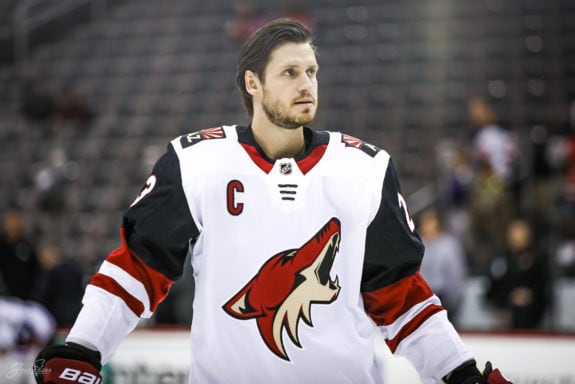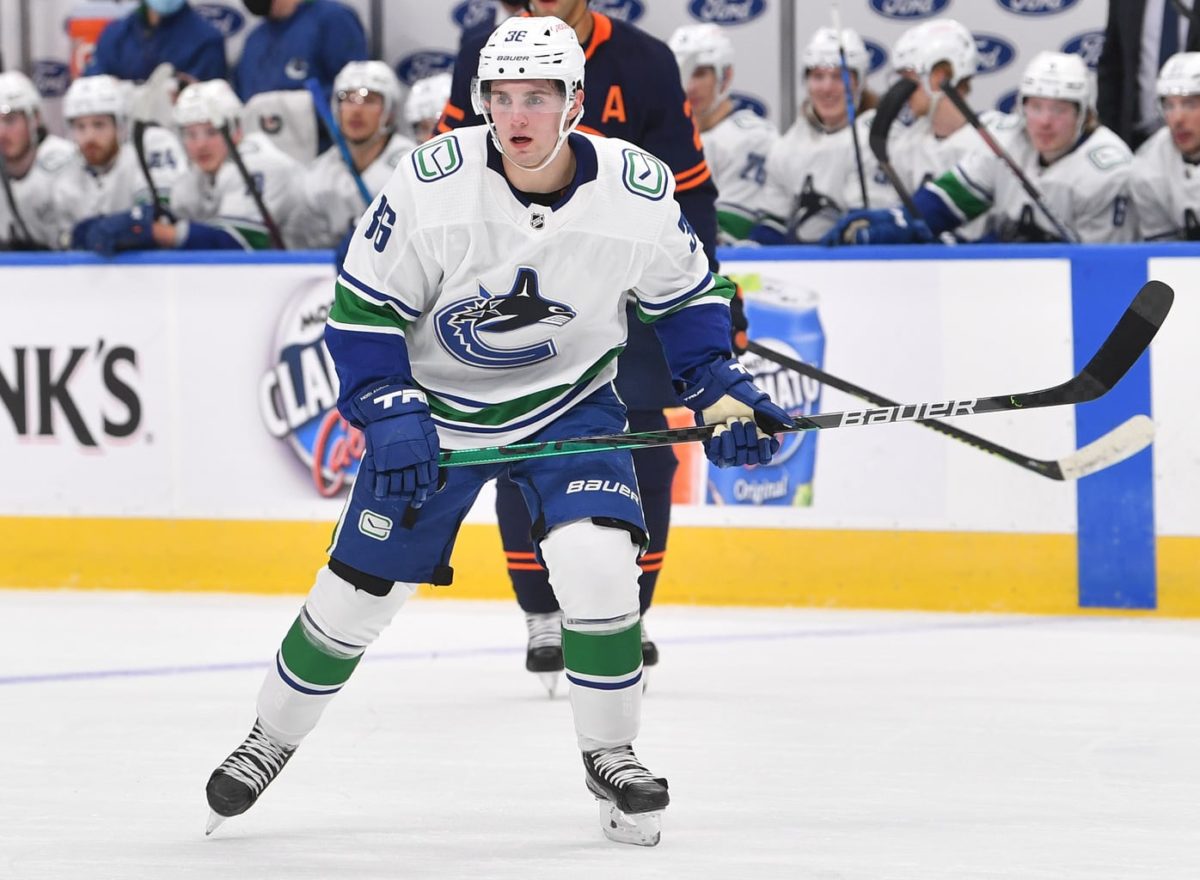There are a lot of question marks surrounding the 2021-22 season for the Vancouver Canucks. Can Thatcher Demko take another step forward? Will Jim Benning be able to lock up his two big restricted free agents (RFAs) in Quinn Hughes and Elias Pettersson? How will the cap hit look after the year is done? But one thing that won’t be in question is the fact that the Canucks’ offense will be much better next season.
While most teams will certainly have optimism heading into training camp, there are a few specific reasons for Canucks’ fans to be excited. Whether it’s the offseason blockbuster trades and additions made, having a healthy lineup or the progression of some of the younger players, there is plenty of positives to look at offensively.
Additions Up Front
One of the biggest blockbusters of the entire offseason had the Canucks bring in a couple of big names to the organization. In a deal with the Arizona Coyotes, Vancouver sent forwards Loui Eriksson, Jay Beagle, and Antoine Roussel, the ninth overall selection in the 2021 NHL Entry Draft, along with a second-round pick in 2022 and a seventh-round selection in 2023, in exchange for winger Conor Garland and defenseman Oliver Ekman-Larsson.

Eriksson, Beagle and Roussel last year combined for a grand total of one goal all of last year… one. Yes, injuries played a major part in that, but Garland alone brings 12 goals and 39 points from this past season. As for Ekman-Larsson, while his defensive play has declined over the last few years, he still produced 24 points in 47 games last season, along with six seasons of 10-plus goals in his career. Throw in the acquisition of Jason Dickinson from the Dallas Stars (pending a deal from their arbitration hearing on August 20th), and the Canucks have added a top-six winger, an offensive top-4 defenseman, and bone-fide third-line center with some scoring upside.
Coming Into Camp Healthy
Yes, it’s a plus to nearly every team heading into training camp, but it’s even more impactful for Vancouver. Unlike the Tampa Bay Lightning and Nikita Kucherov, once Pettersson got hurt, the Canucks lacked the depth to make up for his absence down the middle. After missing the final 30 games with a wrist injury, the secondary scoring for Vancouver struggled to fill the void left by Pettersson. Outside of Brock Boeser, Bo Horvat and JT. Miller, no Canucks forward had more than 13 goals (Nils Hoglander), and that was followed by Tanner Pearson, who had the same amount as Pettersson despite playing 25 more games (10).
With everybody healthy (and hopefully signed) heading into September, the Canucks will be fully healthy and ready to hopefully get off to a hot start come October.
Progression Of Young Players
While the majority of the Canucks failed to take advantage of the opportunity when Pettersson was out, we saw a couple of young players step up and show some promise. Hoglander is the first name that comes to mind, as his rookie season was a very solid start to his young career. He played all 56 games, registering 13 goals and 14 assists (27 points) while averaging 15:27 time on ice (TOI) per game. His Corsi-For Percentage (CF%) was also over 50% at 50.3%, all before the age of 21. His growth should continue as he matures and develops within the system, and with a fully healthy lineup plus the additions during the offseason, there Hoglander could draw some juicier matchups and thrive in year two.

It’s not just second-year players. There are a number of rookies that could make the lineup with the potential to make an impact this season. 22-year-old Jack Rathbone saw some playing time towards the end of last year, chipping in three points across eight games, and very well could make the roster in a bottom-pair role.
There are also forwards William Lockwood (22) and Jonah Gadjovich (23). Both also played some game action last season, and while they didn’t make a huge impact at the NHL level, they have a history of scoring in past seasons. Gadjovich scored 15 goals in 19 games last year with the Utica Comets of the American Hockey League, while Lockwood was nearly a point-per-game (PPG) player, scoring 54 points in 69 games over his final two years at the University of Michigan in the NCAA.
Based on the health, youth, and the players that have been added to the Canucks lineup, there will be no excuses for Vancouver not to take a big step forward this season.